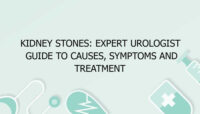Parrot Fever: Causes, Symptoms, Treatment & Variants
Parrot fever, medically known as psittacosis, is an infectious disease caused by the bacterium Chlamydia psittaci. This pathogen primarily affects birds but can also be transmitted to humans, leading to respiratory illness. The disease is named after parrots, as they are among the most common avian carriers. Understanding the causes, symptoms, treatment, and variants of psittacosis is essential for managing and preventing this zoonotic disease.
Causes
Psittacosis is caused by Chlamydia psittaci, a gram-negative bacterium that is a member of the Chlamydiaceae family. The bacterium is obligately intracellular, meaning it can only live and replicate within host cells. It primarily infects birds, including parrots, parakeets, cockatiels, pigeons, and other avian species. Infected birds can carry the bacteria asymptomatically or may show signs of illness.
The transmission of Chlamydia psittaci occurs when humans inhale aerosolized particles containing the bacterium. These particles are released into the environment through the droppings, feathers, or respiratory secretions of infected birds. The disease can also be spread through direct contact with infected birds or their environments, such as their cages and bedding.
Human-to-human transmission of psittacosis is extremely rare, making the primary risk factor for infection related to exposure to infected avian species. This is particularly pertinent for pet owners, bird handlers, and individuals working in environments with high concentrations of birds, such as aviaries or pet shops.
Symptoms
The symptoms of psittacosis in humans can vary widely, ranging from mild flu-like symptoms to severe pneumonia. The incubation period typically ranges from 1 to 4 weeks following exposure to the bacteria. The clinical presentation can be classified into several forms, including:
Respiratory Symptoms: The most common manifestation of psittacosis is a respiratory illness that can present with symptoms similar to those of other respiratory infections. These symptoms include fever, chills, cough, and shortness of breath. The cough is often dry and non-productive, but in some cases, it can become productive with sputum.
Systemic Symptoms: In addition to respiratory symptoms, individuals with psittacosis may experience systemic symptoms such as fatigue, muscle aches, and headaches. These symptoms contribute to a general feeling of malaise.
Pneumonia: In more severe cases, psittacosis can lead to pneumonia, which is characterized by symptoms such as chest pain, difficulty breathing, and a more pronounced cough. Pneumonia caused by psittacosis may require hospitalization, especially if it results in significant respiratory distress or complications.
Gastrointestinal Symptoms: Although less common, some individuals may experience gastrointestinal symptoms, including nausea, vomiting, abdominal pain, and diarrhea. These symptoms are generally less pronounced compared to respiratory manifestations.
Neurological Symptoms: In rare cases, psittacosis can lead to neurological complications, such as confusion, seizures, or meningitis. These symptoms are atypical and occur more frequently in severe or untreated cases.
Chronic Symptoms: If left untreated, psittacosis can lead to chronic illness characterized by persistent cough, fatigue, and recurring respiratory issues. Some individuals may experience long-term health problems even after the acute phase of the disease has resolved.
Treatment
The treatment of psittacosis involves antibiotic therapy, which is effective in eradicating Chlamydia psittaci from the body. Early diagnosis and appropriate treatment are crucial for a successful outcome and to prevent complications. The mainstays of treatment include:
Antibiotics: The primary treatment for psittacosis is a course of antibiotics. Doxycycline is often the first-line treatment, typically administered for 7 to 14 days. Alternatives to doxycycline include tetracycline or azithromycin, which may be used in cases of allergy or intolerance to doxycycline. The choice of antibiotic and duration of therapy may vary depending on the severity of the disease and the patient’s response to treatment.
Supportive Care: In addition to antibiotics, supportive care is important for managing symptoms and aiding recovery. This includes maintaining adequate hydration, managing fever with antipyretics, and providing rest to support the body’s healing process. For individuals with pneumonia or severe respiratory symptoms, supplemental oxygen or other respiratory therapies may be necessary.
Monitoring and Follow-Up: Patients diagnosed with psittacosis should be monitored for response to treatment and potential complications. Follow-up visits may be required to ensure that the infection is fully resolved and to address any lingering symptoms.
Prevention: Preventing psittacosis involves minimizing exposure to infected birds and practicing good hygiene. Individuals working with birds should wear appropriate protective clothing, such as masks and gloves, and ensure proper ventilation in areas where birds are kept. Regular cleaning and disinfection of bird cages and environments can help reduce the risk of infection.
Variants
Psittacosis is caused by a single species of bacterium, Chlamydia psittaci, but there are different strains or serovars of the bacterium that can vary in virulence and host range. These variants are classified based on their genetic makeup and the type of avian host they infect.
Avian Strains: The different strains of Chlamydia psittaci can vary in their ability to cause disease in various bird species. For example, some strains may be more pathogenic in parrots than in pigeons, while others may have a broader host range. The variation in strains can affect the severity of the disease in birds and, consequently, the risk of transmission to humans.
Human Strains: Although psittacosis is primarily transmitted from birds to humans, there may be minor variations in the strains that infect humans. These variations could influence the clinical presentation of the disease or its response to treatment. However, there is no significant evidence suggesting that different strains of Chlamydia psittaci have distinct clinical outcomes in humans.
Regional Differences: The prevalence of psittacosis and the specific strains of Chlamydia psittaci can vary by geographic region. In some areas, particular avian species may be more commonly associated with psittacosis, leading to regional differences in the presentation and management of the disease.
Ongoing research into the genetic diversity of Chlamydia psittaci and its impact on disease severity and transmission is important for understanding and controlling psittacosis. Advances in molecular techniques and epidemiological studies help track the spread of different strains and improve public health responses to outbreaks.
FAQs
What is parrot fever and how is it contracted?
Parrot fever, clinically known as psittacosis, is an infectious disease caused by the bacterium Chlamydia psittaci. It primarily affects birds, such as parrots, parakeets, and pigeons, and can be transmitted to humans through inhalation of aerosolized particles from the droppings, feathers, or respiratory secretions of infected birds. Human-to-human transmission is extremely rare. The primary risk factors include direct contact with infected birds, handling their cages or bedding, and exposure in environments with high concentrations of birds, such as aviaries or pet shops. Proper hygiene and protective measures can help reduce the risk of infection.
What are the common symptoms of psittacosis in humans?
In humans, psittacosis can present with a range of symptoms that may vary in severity. Common symptoms include fever, chills, cough, and shortness of breath, which can resemble those of other respiratory infections. Some individuals may experience systemic symptoms such as fatigue, muscle aches, and headaches. In severe cases, the disease can lead to pneumonia, characterized by chest pain, difficulty breathing, and a more pronounced cough. Gastrointestinal symptoms like nausea and abdominal pain can also occur. Neurological symptoms are rare but may include confusion or seizures. Prompt medical attention is important for diagnosis and treatment.
How is psittacosis diagnosed?
Psittacosis is diagnosed based on clinical symptoms and confirmed through laboratory tests. Diagnosis often starts with a thorough patient history, including exposure to birds. Laboratory tests include polymerase chain reaction (PCR) assays, which detect Chlamydia psittaci DNA in respiratory secretions, blood, or other specimens. Serological tests that identify antibodies against the bacterium can also be used, especially if acute symptoms are not present. In some cases, a diagnosis may be confirmed through culture of the bacterium from respiratory samples, although this is less commonly performed due to the difficulty of culturing Chlamydia psittaci.
What is the treatment for psittacosis?
The treatment for psittacosis involves a course of antibiotics. Doxycycline is commonly used as the first-line treatment, typically administered for 7 to 14 days. Alternatives such as tetracycline or azithromycin may be used in cases of intolerance or allergy to doxycycline. Early diagnosis and treatment are crucial to avoid complications and ensure a full recovery. Supportive care, including hydration, rest, and management of symptoms, is also important. For severe cases involving pneumonia or respiratory distress, additional medical interventions such as supplemental oxygen may be necessary. Regular follow-up is important to monitor the patient’s response to treatment.
Can psittacosis be prevented?
Preventing psittacosis involves minimizing exposure to infected birds and practicing good hygiene. Individuals working with birds, such as pet owners, bird handlers, and those in aviaries, should wear protective clothing, including masks and gloves, and ensure proper ventilation. Regular cleaning and disinfection of bird cages and their environments can help reduce the risk of infection. Avoiding direct contact with sick birds and ensuring that new birds are examined by a veterinarian before introduction to a household can also help prevent outbreaks. Public awareness and education about the risks associated with bird handling are important for prevention.
**Are there any long-term
effects of psittacosis?**
Most individuals with psittacosis recover fully with appropriate antibiotic treatment, and long-term effects are rare. However, if the disease is left untreated or if it leads to severe complications such as pneumonia, individuals may experience persistent symptoms, including a chronic cough or ongoing respiratory issues. Some patients may also experience long-term fatigue or reduced lung function. Early diagnosis and treatment are critical to minimizing the risk of long-term effects and ensuring complete recovery. Follow-up care may be necessary to address any lingering symptoms or complications.
What types of birds are most commonly associated with psittacosis?
Psittacosis is commonly associated with pet birds such as parrots, parakeets, cockatiels, and lovebirds. However, other avian species, including pigeons, doves, and turkeys, can also harbor Chlamydia psittaci and transmit the infection. The risk of psittacosis is higher in environments where there is close contact with multiple birds, such as in pet shops, aviaries, or breeding facilities. Regular health checks and proper hygiene practices can help reduce the risk of infection from these birds.
How can pet owners reduce the risk of psittacosis?
Pet owners can reduce the risk of psittacosis by practicing good hygiene and maintaining a clean environment for their birds. This includes regularly cleaning and disinfecting bird cages, perches, and toys, as well as washing hands thoroughly after handling birds or their droppings. Using protective measures such as masks and gloves when cleaning or handling birds can further reduce the risk of infection. Additionally, ensuring that pet birds are regularly checked by a veterinarian and are healthy before introduction into a household can help prevent the spread of psittacosis.
Is psittacosis a serious disease?
Psittacosis can range from mild to severe, depending on the individual’s health status and the timeliness of treatment. In many cases, the disease presents with flu-like symptoms and can be effectively managed with antibiotics. However, in more severe cases, particularly those involving pneumonia or significant respiratory distress, psittacosis can be serious and may require hospitalization and intensive medical care. Early diagnosis and treatment are crucial to prevent complications and ensure a favorable outcome. Overall, with prompt medical attention, most individuals recover fully without long-term consequences.
What research is being conducted on psittacosis?
Research on psittacosis focuses on several areas, including improving diagnostic methods, understanding the genetic diversity of Chlamydia psittaci, and developing more effective vaccines and treatments. Studies are investigating the molecular mechanisms of infection, the impact of different bacterial strains on disease severity, and strategies for preventing zoonotic transmission. Additionally, research aims to better understand the epidemiology of psittacosis, including risk factors and prevalence in various bird populations. Advances in these areas can enhance public health responses and improve management and prevention strategies for psittacosis.


